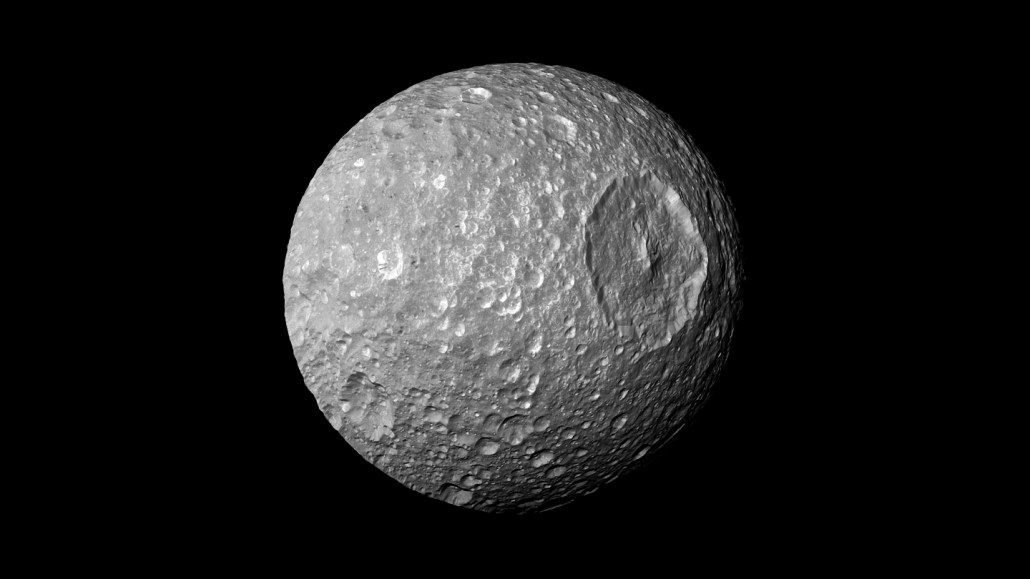Saturn’s ‘Death Star’ moon might contain a hidden ocean
The possibility increases the odds that oceans lurk on even more icy satellites

The enormous Herschel crater dominates Saturn’s moon Mimas, giving it a Death Star–like appearance. New evidence suggests a large ocean might also lurk beneath the moon’s ice.
JPL-Caltech/NASA, Space Science Institute







